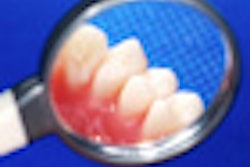Dear Oral Cancer & Diagnostics Insider,
The alarming growth of head and neck squamous cell carcinoma (HNSCC) among young people has spurred research into its epidemiology, and mounting evidence strongly supports the role of human papillomavirus (HPV) in this trend.
In this latest Insider Exclusive, Mine Tezal, DDS, PhD, a research professor at the University at Buffalo who publishes regularly on the association between chronic periodontitis, HPV, and HNSCC, discusses why she thinks labeling oral HPV infection as a "sexually transmitted disease" is misleading and when HPV vaccinations should be administered to young people.
In a related story, Tezal and other researchers found that patients with a history of periodontitis who develop HNSCC are more likely to have HPV-positive tumors. Read how their findings could lead to the prevention and treatment of oral inflammation and reduce the prevalence of oral HPV infection.
And a growing body of evidence shows that oral sex is linked to the rising rate of head and neck cancer in young people, particularly oropharyngeal cancer. Click here to read what researchers suggest to protect against the disease and how to detect it.
In other Oral Cancer & Diagnostics Community news, Mayo Clinic researchers compared the costs of surgery and chemoradiation therapy for treating patients with oropharyngeal squamous cell carcinoma and found that surgery alone is the least expensive treatment option. Click here to find out what the most expensive option is.
And what role does race play in oral cancer treatment and survival? A pair of studies evaluated the differences in treatment and outcomes between black and white patients with oral cancer. Click here to see what researchers at the University of California, Davis and the Memorial Sloan-Kettering Cancer Center in New York found about the surprising differences in treatments for larynx preservation, and here to read how race affects survival for patients with oropharyngeal cancer.
Meanwhile, a study presented at the recent International Association for Dental Research meeting in Brazil looked at how autofluorescence imaging and spectroscopy can help identify early oral cancer and advanced dysplasia in high-risk individuals. Read more.
And what commonly used drug might reduce the risk of Barrett's esophagus, the largest known risk factor for esophageal cancer? Click here.
In other news, researchers from Mount Sinai School of Medicine in New York evaluated the use of transoral robotic surgery for tobacco users with head and neck cancer. Read about their findings here.
Finally, the potential harm from dental x-rays has been debated. Now, the American Thyroid Association has issued recommendations for when thyroid collars should be used. And read about a study by Canadian health officials about the possible links between dental x-rays and certain types of cancer.



















